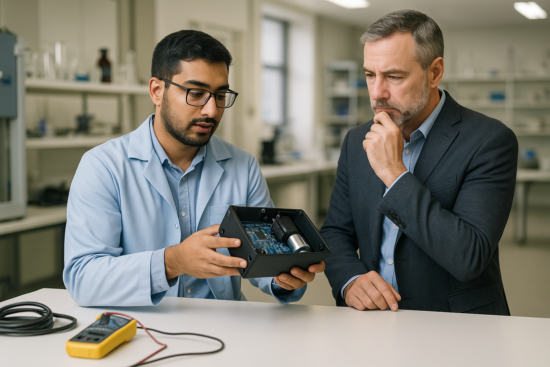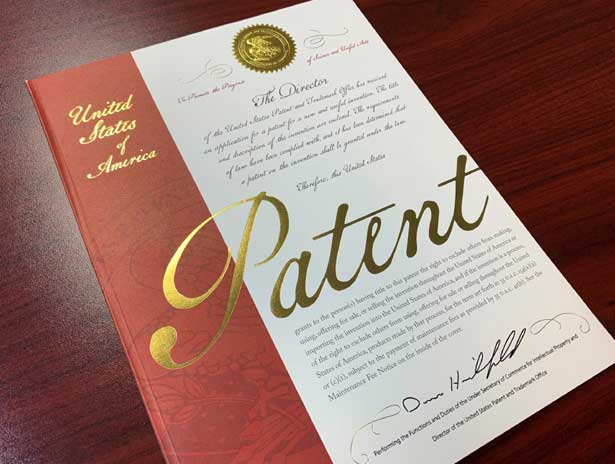
Businesses and entrepreneurs often face a critical problem: they fail to recognize patentable subject matter in their innovative products or services and inadvertently forfeit valuable patent rights by entering the marketplace without first filing a patent application. Whether developing cutting-edge digital technologies, advanced electronics, chemical innovations, novel consumer products, or new machinery, innovators must understand how to protect their creations from the outset.
In the United States, there is a limited grace period (12 months for utility patents and 6 months for design patents) after public disclosure, sale, or offer for sale of an invention during which a patent application can still be filed. If the application filed is not submitted within this grace period, the invention becomes part of the public domain, and the patent applicant permanently forfeits the right to obtain a patent grant for that invention.
First-time patent applicants, tech startups, and other innovators must understand when to initiate the patent process to avoid losing protection. Understanding patentable subject matter and recognizing potentially patentable innovations enables inventors to investigate patent protection and maximize the commercial value of their developments.
This article provides an overview of the types of inventions that may be protected under U.S. patent law pursuant to 35 U.S.C. §101. We also discuss important aspects of design patents, plant patents, and developments under European patent law to give innovators a comprehensive guide to safeguarding their innovations.
Under 35 U.S.C. §101, a patentable invention must be a "new and useful process, machine, manufacture, or composition of matter, or any new and useful improvement thereof." This definition encompasses substantially every invention that falls within the "useful arts," but it is not without limits.
The most common type of patent is a utility patent, which protects functional inventions and innovations. Four categories define utility patent eligibility under U.S. patent law, each requiring that the claimed invention be new, useful, and directed to eligible subject matter.
To be eligible, the invention claimed must meet the utility requirement, meaning it must serve an intended purpose and provide some identifiable benefit. While the threshold for utility is low, courts and the patent office have occasionally rejected inventions for lacking practical utility, such as perpetual motion machines or other devices that violate the laws of physics.
Despite the breadth of §101, courts have carved out certain judicial exceptions to what is considered patentable subject matter. Subject matter that falls into these judicially created categories are non-patentable:
A claimed invention that falls into one of these judicial exception categories is not patentable unless it includes additional elements that amount to "significantly more" than the judicial exception itself—a standard articulated in landmark cases such as Alice Corp. v. CLS Bank, 573 U.S. 208 (2014) (regarding abstract ideas implemented on a generic computer) and Mayo Collaborative Services v. Prometheus Labs, 566 U.S. 66 (2012) (regarding laws of nature in medical treatment methods). In practice, this means the invention must incorporate an inventive concept sufficient to transform the judicial exception into a patent-eligible application.
To be eligible for a patent grant, an invention must satisfy three primary patentability requirements: (1) it must be within the statutory subject matter defined by §101, (2) it must be novel under §102, and (3) it must be non obvious under §103. This article focuses on the first prong—patentable subject matter.
The novelty requirement ensures that a claimed invention is new and has not been disclosed in the prior art before the filing date of the patent application. Under 35 U.S.C. §102, an invention is anticipated, and therefore not novel, if a single prior art reference discloses each and every element of the claimed invention, either expressly or inherently. Anticipation requires that the prior art enable a person of ordinary skill to make and use the invention without undue experimentation. If an invention is anticipated, it cannot receive a patent grant because it does not add anything new to the public domain. Click for a more in-depth explanation of novelty.
The non-obviousness requirement, set forth in 35 U.S.C. §103, mandates that a claimed invention must not be an obvious variation of the prior art to a person having ordinary skill in the relevant field. Even if an invention is novel, it is not patentable if the differences between the invention and prior art would have been obvious at the time the patent application was filed. Courts assess non-obviousness by considering factors such as the scope and content of the prior art, the differences between the prior art and the claimed invention, and the level of skill in the pertinent art. Click for a more in-depth explanation of obviousness.
A critical step in determining whether your invention is patentable is conducting a thorough patent search and prior art search. The United States Patent and Trademark Office (USPTO) evaluates whether the claimed invention is novel and non obvious in view of the prior art, which includes any printed publication, earlier patent applications filed, or known uses. As each patent application must be tailored to the unique attributes of an invention, a thorough prior art search is essential to achieving a patent grant.

In the U.S., an application filed can take the form of a provisional application or a non provisional application. A provisional application is a placeholder that establishes an early filing date but is not examined. A non provisional application is the full patent application examined by the USPTO.
A design patent protects the ornamental appearance of an article of manufacture, rather than its utilitarian features. Unlike a utility patent, which protects how an invention works, a design patent protects how an article looks. This includes the shape, surface ornamentation, or a combination of both applied to an article of manufacture.
To qualify for design patent protection, the design must meet several specific requirements:
The scope of protection for a design patent is limited to the visual features shown in the submitted drawings, making the preparation of accurate and comprehensive drawings critical to the patent process. Term protection for U.S. design patents is 15 years from the date of patent grant, with no maintenance fees required during that period. Click for a more in-depth explanation of design patents.
Under 35 U.S.C. §161, a plant patent may be granted to anyone who invents or discovers and asexually reproduces any distinct and new variety of plant. The plant must be asexually reproduced (not grown from seed), not found in an uncultivated state, and distinct from known varieties. Examples include new rose or apple tree cultivars. Like utility patents, plant patents last for 20 years from the filing date. Click for a more in-depth explanation of plant patents.
Under European patent law, the criteria are slightly different but similar in concept. The European Patent Convention (EPC) recognizes patentable inventions if they have industrial applicability, are novel, and involve an inventive step. Under EPC Article 56, the "inventive step" requirement is akin to obviousness; what matters is whether the claimed invention would have been obvious to the person skilled in the art, considering the state of the art as a whole.
Software inventions, for example, are treated more restrictively in Europe and must provide a "further technical effect" beyond a basic computer implementation. European practice also places emphasis on technical processes and disallows claims that are purely business, aesthetic, or mental in nature.
A valid patent gives the patent owner the exclusive right to exclude others from making, using, or selling the patented invention for a limited time. For utility patents in the U.S., that term is generally 20 years from the earliest effective filing date, subject to the payment of maintenance fees.
Ownership initially resides with the named inventors unless assigned. Patents can enter the public domain if maintenance fees are not paid, or if the patent expires.
It is important to distinguish patents from other forms of intellectual property, as different types of legal protection cover different aspects of creative and commercial endeavors.
Understanding these distinctions is essential for securing comprehensive intellectual property rights. Innovators often seek overlapping protection—for example, by obtaining patent protection for functional features, copyright protection for related written materials or designs, and trademark protection for product names and logos—to create robust legal safeguards for their creations and business assets.
Entrepreneurs that innovate and development novel products and services should understand how to identify patentable innovations. Whether your innovation is a composition of matter, a technical process, a novel design, or a new plant variety, being able to recognize whether it includes patentable subject matter can mean the difference between acquiring intellectual property rights or forfeiting them.
© 2025 Sierra IP Law, PC. The information provided herein does not constitute legal advice, but merely conveys general information that may be beneficial to the public, and should not be viewed as a substitute for legal consultation in a particular case.

"Mark and William are stellar in the capabilities, work ethic, character, knowledge, responsiveness, and quality of work. Hubby and I are incredibly grateful for them as they've done a phenomenal job working tirelessly over a time span of at least five years on a series of patents for hubby. Grateful that Fresno has such amazing patent attorneys! They're second to none and they never disappoint. Thank you, Mark, William, and your entire team!!"
Linda Guzman

Sierra IP Law, PC - Patents, Trademarks & Copyrights
FRESNO
7030 N. Fruit Ave.
Suite 110
Fresno, CA 93711
(559) 436-3800 | phone
BAKERSFIELD
1925 G. Street
Bakersfield, CA 93301
(661) 200-7724 | phone
SAN LUIS OBISPO
956 Walnut Street, 2nd Floor
San Luis Obispo, CA 93401
(805) 275-0943 | phone
SACRAMENTO
180 Promenade Circle, Suite 300
Sacramento, CA 95834
(916) 209-8525 | phone
MODESTO
1300 10th St., Suite F.
Modesto, CA 95345
(209) 286-0069 | phone
SANTA BARBARA
414 Olive Street
Santa Barbara, CA 93101
(805) 275-0943 | phone
SAN MATEO
1650 Borel Place, Suite 216
San Mateo, CA, CA 94402
(650) 398-1644. | phone
STOCKTON
110 N. San Joaquin St., 2nd Floor
Stockton, CA 95202
(209) 286-0069 | phone
PORTLAND
425 NW 10th Ave., Suite 200
Portland, OR 97209
(503) 343-9983 | phone
TACOMA
1201 Pacific Avenue, Suite 600
Tacoma, WA 98402
(253) 345-1545 | phone
KENNEWICK
1030 N Center Pkwy Suite N196
Kennewick, WA 99336
(509) 255-3442 | phone
2023 Sierra IP Law, PC - Patents, Trademarks & Copyrights - All Rights Reserved - Sitemap Privacy Lawyer Fresno, CA - Trademark Lawyer Modesto CA - Patent Lawyer Bakersfield, CA - Trademark Lawyer Bakersfield, CA - Patent Lawyer San Luis Obispo, CA - Trademark Lawyer San Luis Obispo, CA - Trademark Infringement Lawyer Tacoma WA - Internet Lawyer Bakersfield, CA - Trademark Lawyer Sacramento, CA - Patent Lawyer Sacramento, CA - Trademark Infringement Lawyer Sacrament CA - Patent Lawyer Tacoma WA - Intellectual Property Lawyer Tacoma WA - Trademark lawyer Tacoma WA - Portland Patent Attorney - Santa Barbara Patent Attorney - Santa Barbara Trademark Attorney